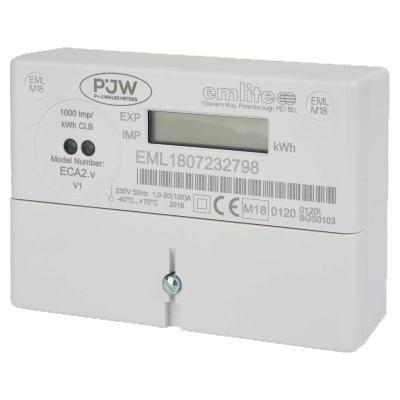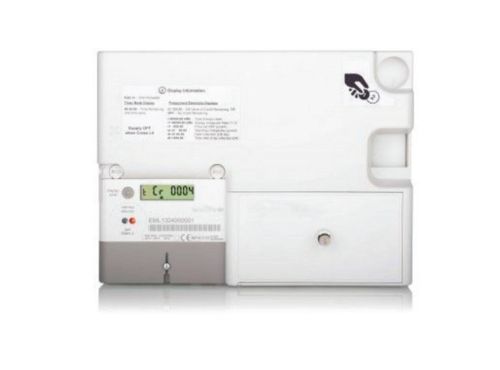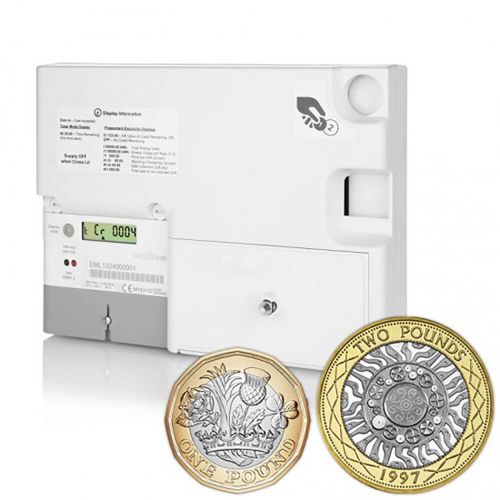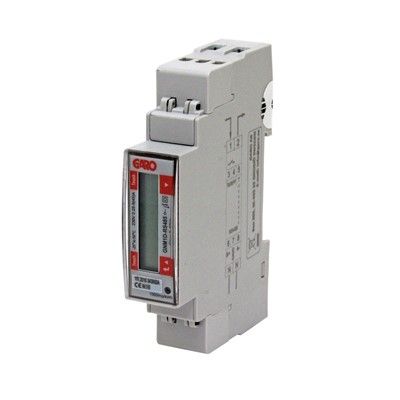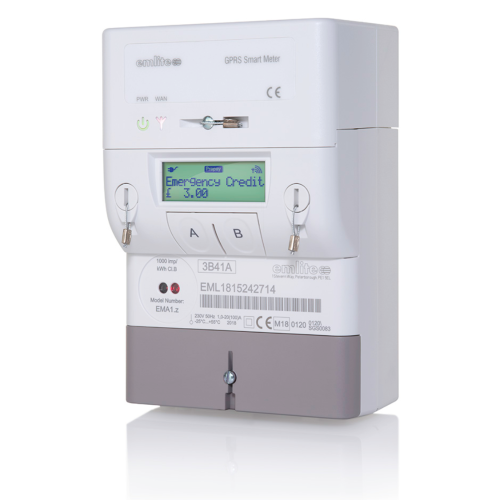High-Quality Electricity & Electric Meters
Explore our extensive selection of electric meters, including prepayment card, coin, timer, single-phase, three-phase, and caravan hook-up meters. Ideal for both residential and commercial use, our electric meters allow precise monitoring of electricity usage in various settings. At Meteor Electrical, you can choose from Single Phase Electric Meters and Electronic Meters. Single-phase meters operate at 230-240 volts, while our electronic coin prepayment meters from Emlite accept euros and are user-friendly, perfect for holiday homes and apartments.
An electrical meter is a device primarily used to track electricity consumption. Since you don’t get electricity for free, there's always a need to measure the amount of power generated, and this is where electricity meters come in. At Meteor Electrical, you can find a wide range of high-quality electricity meters to suit all applications.
Welcome to our comprehensive guide on electric meters! Whether you're a homeowner, tenant, or landlord, understanding electric meters is essential for managing energy consumption and ensuring accurate billing. Below, we cover everything from how to read your electric meter to troubleshooting common issues.
What is an Electric Meter?
An electric meter, also known as an electricity meter, measures the amount of electrical energy consumed by a residence, business, or other electrically powered equipment. These meters come in various types, including traditional analog meters and modern digital smart meters.
Types of Electric Meters:
-
Analog Electric Meters: These meters have rotating dials or spinning disks to display energy consumption. They are gradually being replaced by digital meters but are still prevalent in many areas.
-
Digital Electric Meters: Digital meters display energy consumption in numerical form on a digital screen. They are more accurate and offer additional features such as remote reading capabilities.
-
Smart Electric Meters: Smart meters provide real-time energy usage data to both consumers and utility companies. They offer insights into energy consumption patterns and may support features like time-of-use pricing and remote connection/disconnection.
How to Read an Electric Meter:
Reading your electric meter is crucial for monitoring energy usage and detecting any abnormalities. Follow these steps to read your meter accurately:
-
Analog Meters: Record the numbers displayed on each dial from left to right. Pay attention to any half or fractional numbers and note them down.
-
Digital Meters: Simply read the numbers displayed on the digital screen. Some meters may cycle through different displays, so be sure to capture the correct reading.
-
Smart Meters: Smart meters typically have a digital display that scrolls through various screens. Look for the screen displaying your current energy usage in kilowatt-hours (kWh) to obtain the reading.
Common Electric Meter FAQs:
-
How Often Should I Read My Electric Meter? It's recommended to read your electric meter regularly, ideally at least once a month, to monitor energy usage trends and detect any issues promptly.
-
What to Do If My Electric Meter Stops Working? If you notice any issues with your electric meter, such as a blank screen or unusual readings, contact your utility provider immediately to report the problem and request assistance.
-
Can I Move My Electric Meter? Moving an electric meter typically requires professional assistance and approval from your utility provider. Contact them to discuss your specific requirements and ensure compliance with regulations.
-
How Do I Top Up My Electric Meter? If you have a prepayment or pay-as-you-go electric meter, you can top it up using various methods, including online platforms, mobile apps, and designated payment locations.
-
What Should I Do If I Suspect Meter Tampering? Meter tampering is illegal and poses safety risks. If you suspect meter tampering or notice any unauthorized modifications, report it to your utility provider immediately. If you're unable to do an electric meter reading yourself, have a professional electric meter reader do it for you.
How Does an Electrical Meter Work?
An electrical meter is often placed where power lines enter a building. These meters work non-stop, tracking power usage and displaying the amount of power consumed since installation. At Meteor Electrical, our meters measure power usage in kilowatts (kWh). A watt is the smallest unit of electrical power, and a kilowatt equals a thousand watt-hours.
An electrical meter can display this information in digital or dial format. Reading electric meters is straightforward. To find out the amount of energy used in any given period, take two readings and subtract the second reading from the first.
Do Electricity Meters Have a Lifespan?
The lifespan of an electricity meter depends on its type. An induction meter can last up to 10 years, while a static meter can last up to 20 years. Water meters last up to 20 years, and gas meters up to 25 years. After the expected lifespan, it's advised to have your meter inspected and, if needed, replaced.
Components of an Electrical Meter:
-
Meter Number: The meter number is a unique sequence of integers identifying the energy usage of each household/building/premise. It's usually printed next to or under the display and does not change.
-
Display: Shows the amount of electricity consumed since the meter's installation.
Types of Electrical Meter Options at Meteor Electrical:
-
Single-Phase Electric Meters: Typically used for home appliances and connected between the line and load. They consist of two electromagnets (shunt magnet and series magnet) with an aluminum disk rotating in the magnetic field. The disk's speed is proportional to the power consumed by the connected appliance.
-
Three-Phase Electric Meters: In a single-phase system, power flows through a single conductor, requiring two wires (one conductor and one neutral). In a three-phase system, power flows through three conductors, requiring four wires (one neutral and three conductors). The three-phase supply is continuous and never drops to zero, but it can also be used as a single-phase system in some cases.
-
Electronic Meters: Highly accurate, precise, and more reliable than induction meters, electronic meters consume less power and start measuring instantaneously when connected to the load. They come in digital and analog varieties, with digital meters measuring power directly and analog meters converting power to frequency. Electronic meters have an LCD with a backlit screen displaying the date, time, and Maximum Demand Indicator (MDI) reading. They offer better accuracy, low current and voltage performance, and are difficult to tamper with. Modern solid-state electronic meters contain advanced components to measure electrical energy with higher accuracy and lower power consumption. They can include prepayment options (e.g., card readers) and remote reading capabilities (e.g., wireless, telephone line, or internet).
What is a Prepayment Electrical Meter?
A prepayment meter allows you to pay for electricity in advance, ensuring you only use prepaid electricity. If you run out of credit, your provider may back-charge you to keep the supply running, leading to potential energy debt. To avoid this, monitor your usage closely with prepayment meters.
Reading an Electrical Meter:
Reading electric meters regularly has several advantages:
-
Know Your Usage: Reading your meter lets you know how much electricity you're using and its cost.
-
Accurate Billing: Providing regular readings to your supplier ensures you're not overcharged.
-
Compare Suppliers: Accurate readings are necessary when comparing energy suppliers and tariffs.
MPAN and MPRN Numbers:
-
MPAN (Meter Point Administration Number): Identifies electricity supply points, typically a 21-digit number starting with 'S,' found under "details of charges" on a business electricity bill or on your meter.
-
MPRN (Meter Point Reference Number): A unique 11-digit number assigned to an electricity connection and meter, also found on your bill and meter.
Electricity Meter Units:
An electricity meter measures watts of electricity, representing electrical potential. The actual energy usage is measured in kilowatt-hours (kWh), combining watts consumed over time.
Meter Accuracy:
Electric meters are designed to record usage accurately. Accuracy is crucial to avoid overbilling consumers or losses for suppliers. Statutory provisions establish the degree of accuracy and procedures for meter accuracy disputes. For more information, contact Meteor Electrical’s customer services.
Location of the Electricity Meter:
The meter location varies, but generally, it's where energy enters the area. In homes, meters might be outside in a meter box or inside in a garage, utility/laundry room, under the stairs, or in a kitchen cabinet. In flats, meters are usually in a shared utility room or understairs cupboard. Contact your landlord or letting agent if you can't locate your meter.
Meter Ownership:
Despite being installed in your home, meters belong to your electricity supplier, responsible for ensuring proper functionality. Keep an eye on your meter and report issues to your supplier.
Electricity Meter Functions:
-
Measure Consumption: Track consumption (kWh), active and contracted power (kW), reactive power (kvar), and power factor.
-
Check Phantom Consumption: Monitor standby mode consumption and check for current leaks.
-
Evaluate Appliance Performance: Measure consumption of specific appliances by isolating them.
Smart Meters:
Smart meters provide real-time data on energy usage, helping consumers manage energy effectively and suppliers manage networks.
Sub-Metering:
Install additional meters to measure energy usage in specific areas or devices, identifying high usage areas and implementing targeted efficiency measures.
Prepayment Meters:
Prepayment meters, like the Euro 1 & 2 100A Electronic Coin Prepayment Meter PJW, allow users to prepay for energy, useful in rental properties.
Conclusion:
Understanding electric meters is essential for efficient energy management and accurate billing. By familiarizing yourself with your meter type and learning how to read it correctly, you can take control of your energy usage and ensure a reliable electricity supply. If you have any questions or encounter issues with your electric meter, don't hesitate to contact your utility provider for assistance.
For more information on electric meters or assistance with your specific queries, feel free to reach out to us. We're here to help you navigate the world of electric meters and optimize your energy usage.
FAQ's
- How does Electrical Meters work?
- How long do Electrical Meters last?
- Can I install my own Electrical Meter?
- Where can Electrical Meters be installed?
- What is a Prepayment Coin Meter?
- What are Single Phase Energy Meters?
- Can I fit electrical meters myself?
- How long do electricity meters last?
- Can I switch to a prepaid electric meter?
- What is an electric meter?
- How does an electric meter work?
- What are the different types of electric meters?
- How do I read my electric meter?
- How often should electric meters be replaced?
- Can I move my electric meter?
- How can I check if my electric meter is accurate?
- What should I do if my electric meter is malfunctioning?

